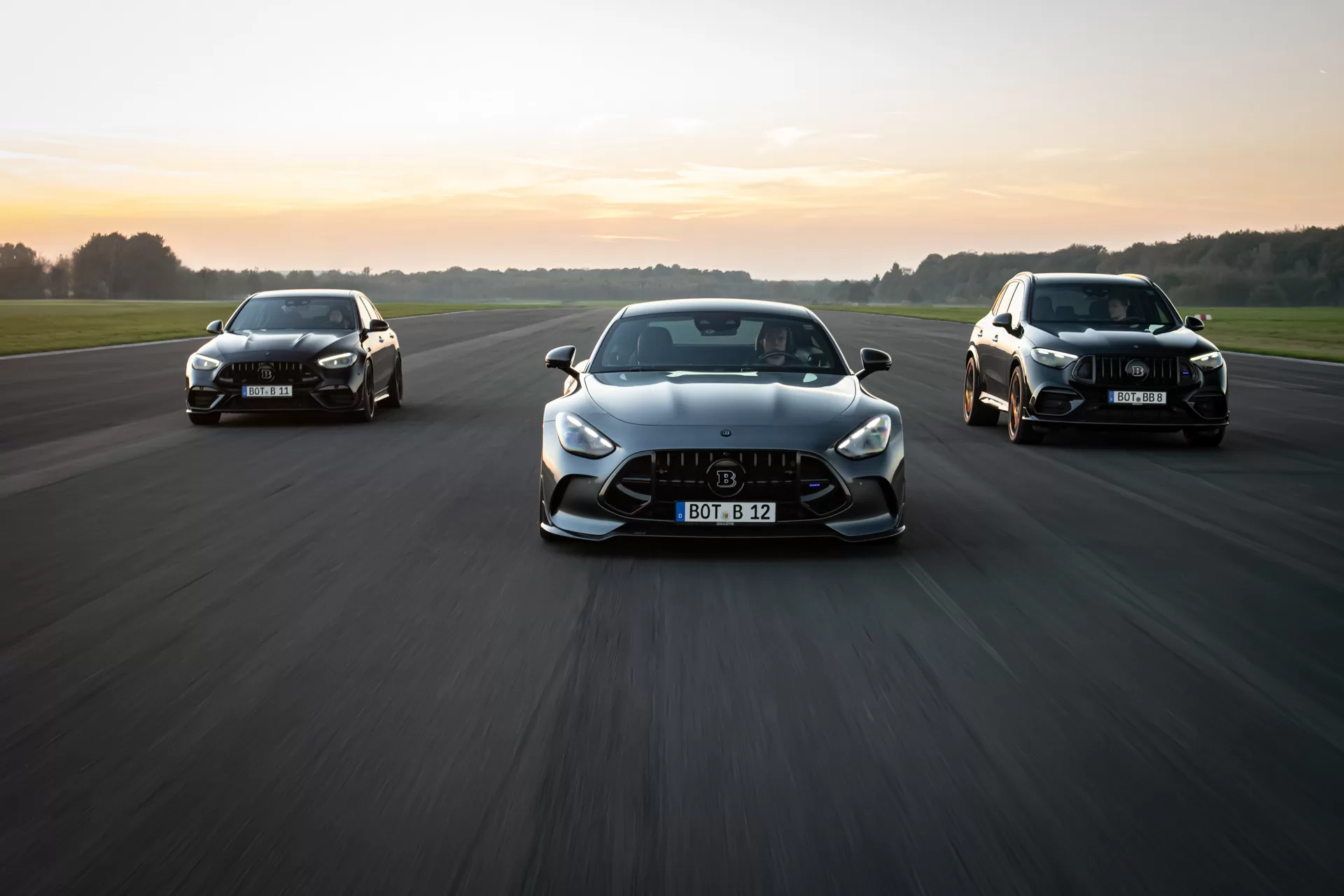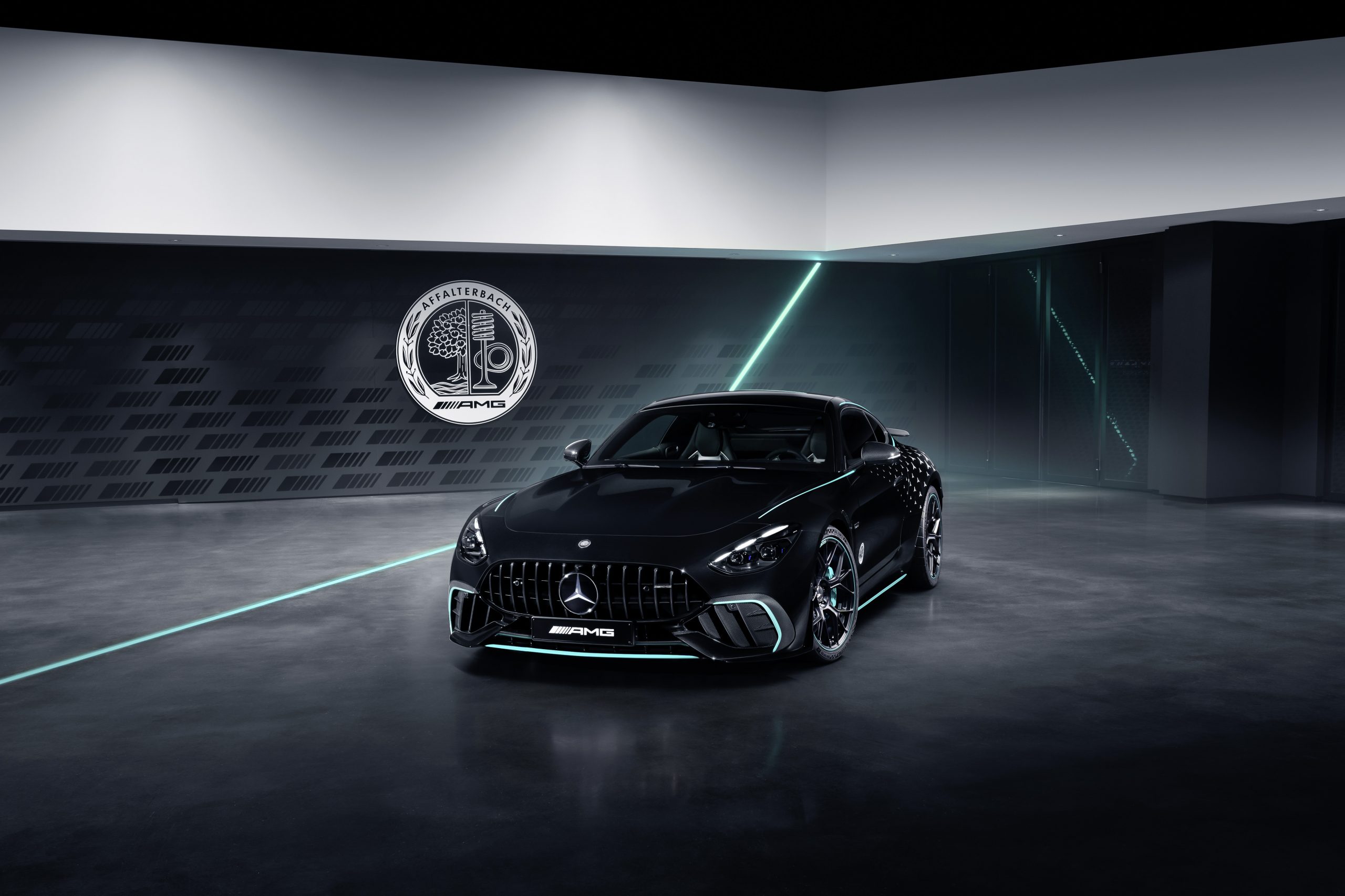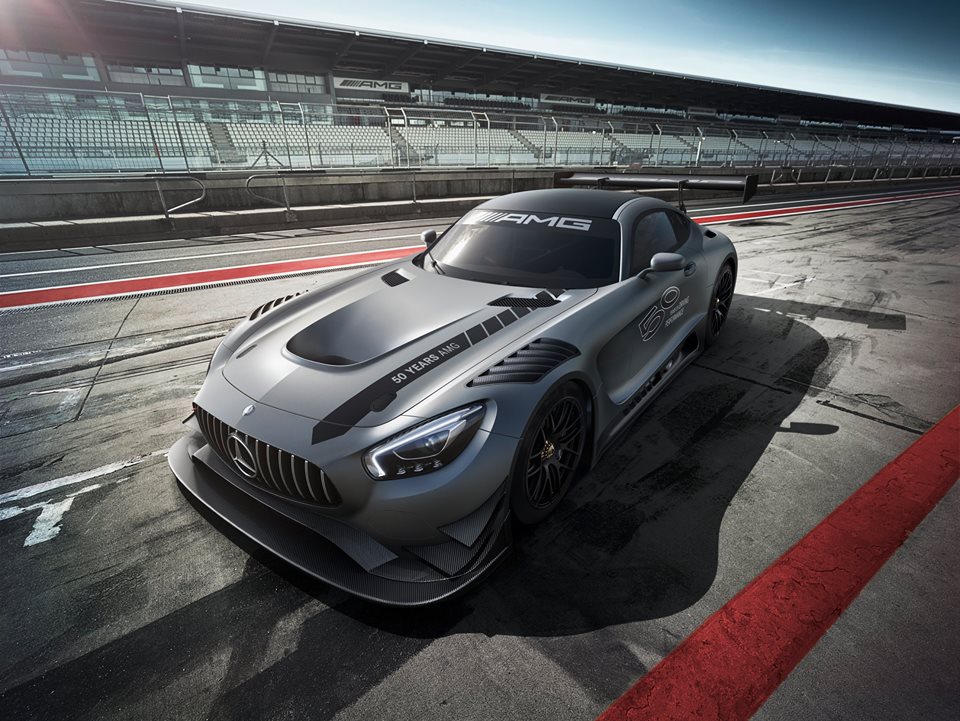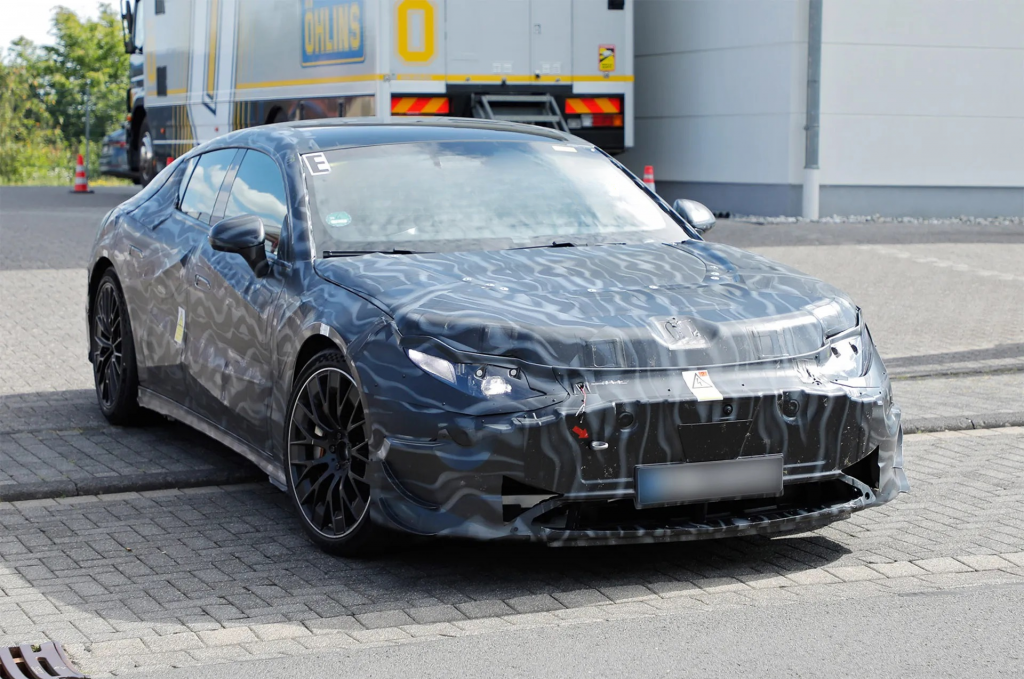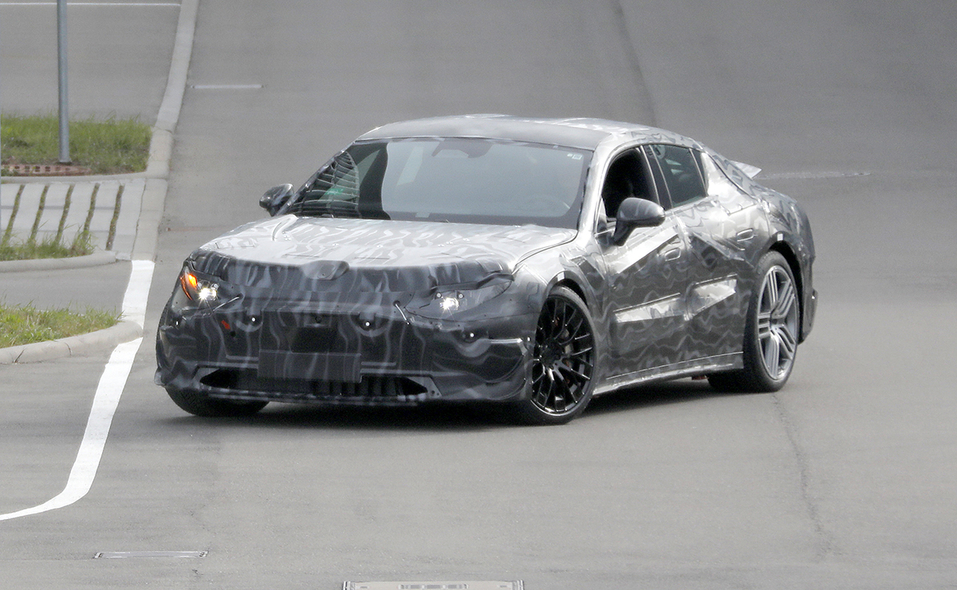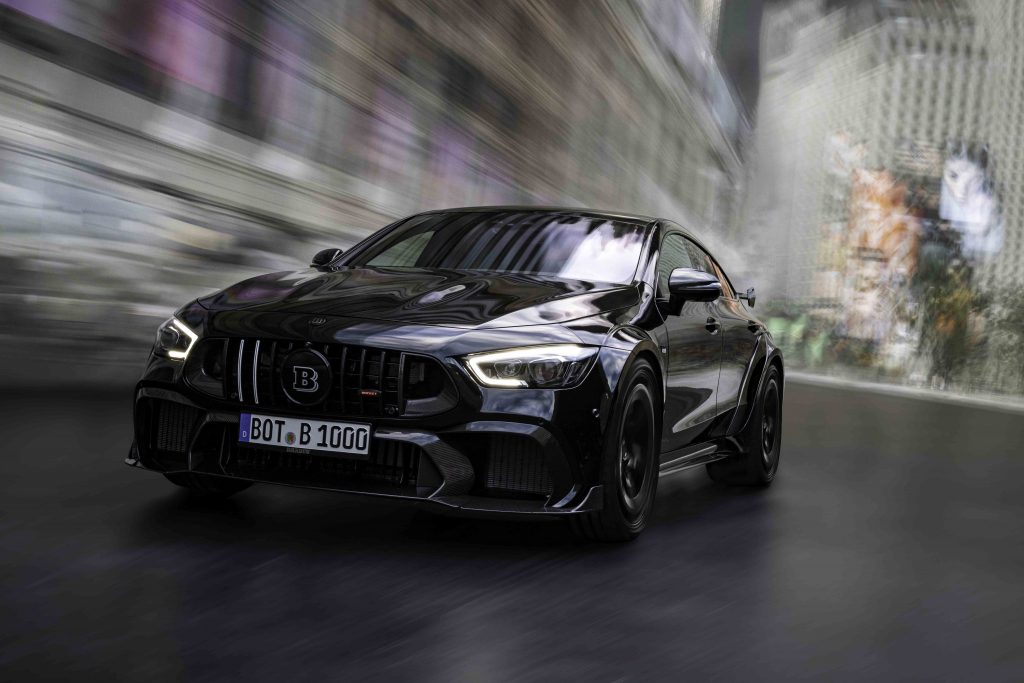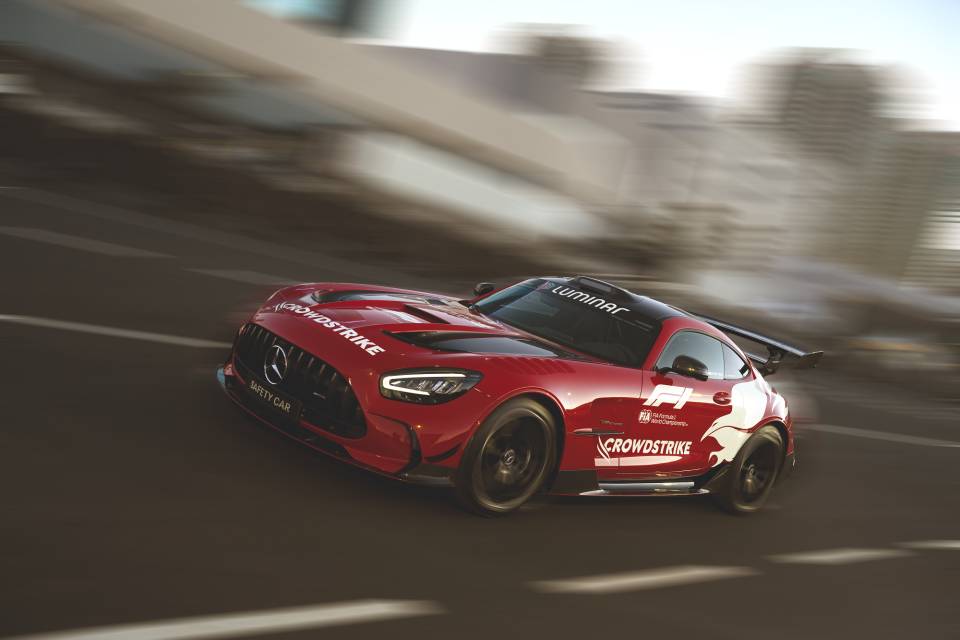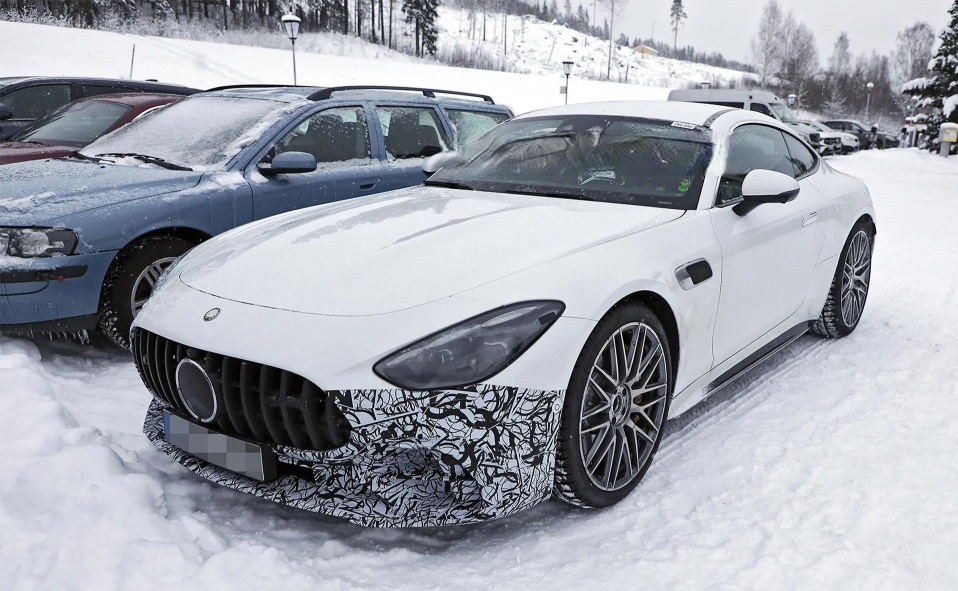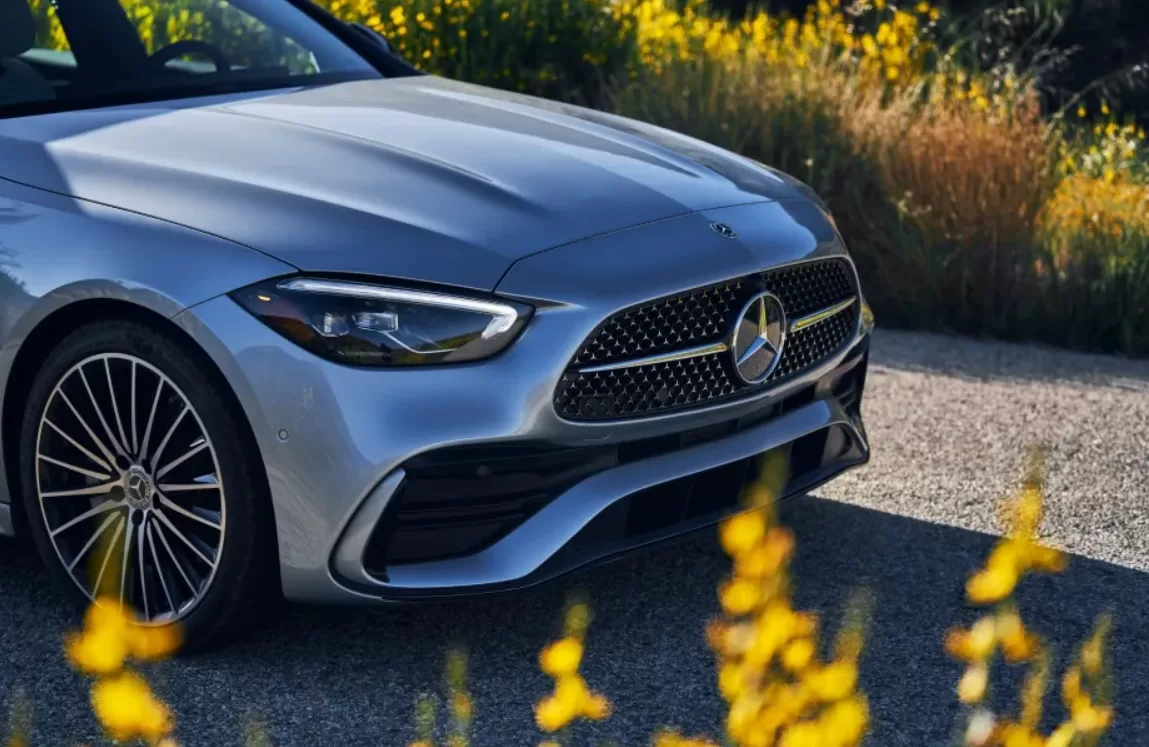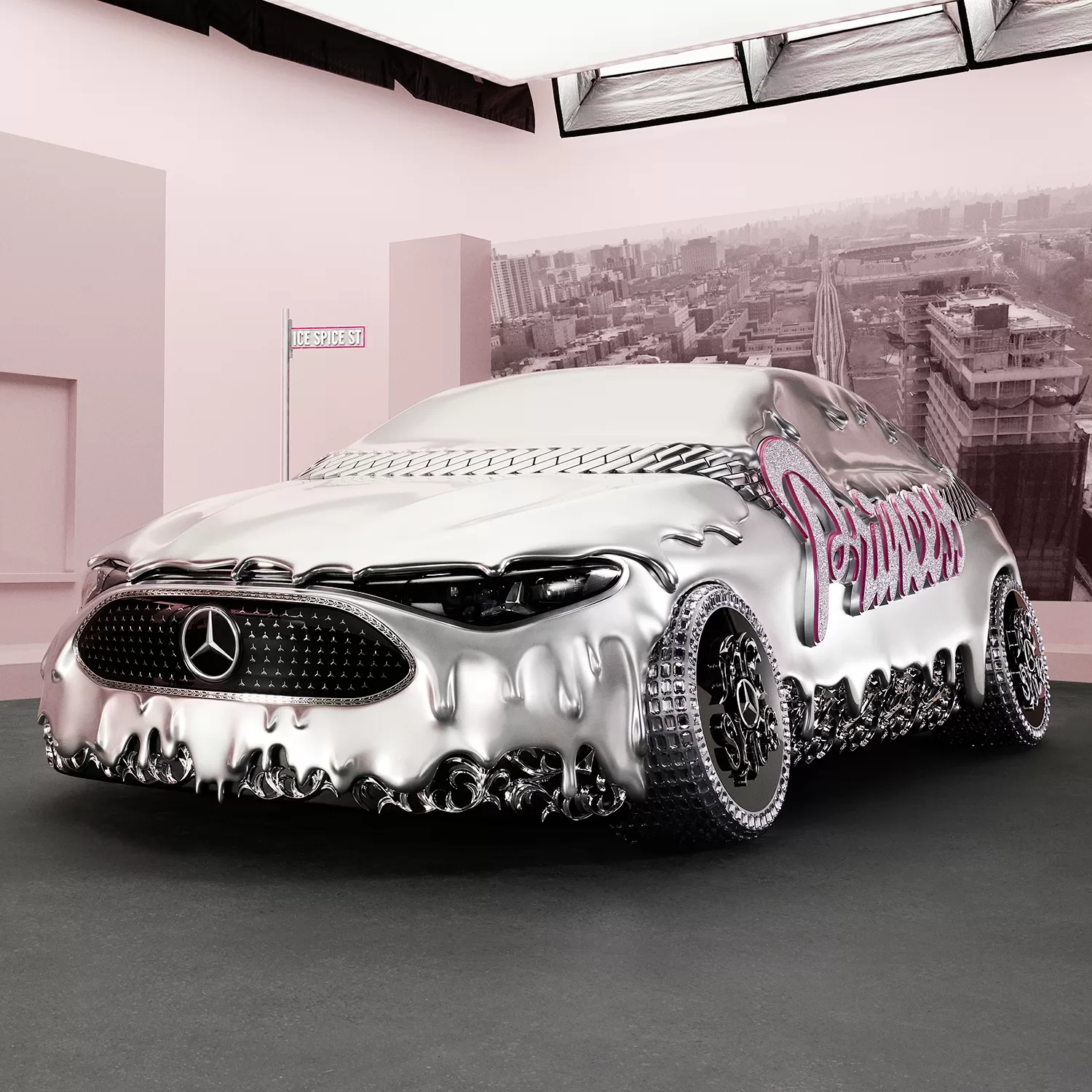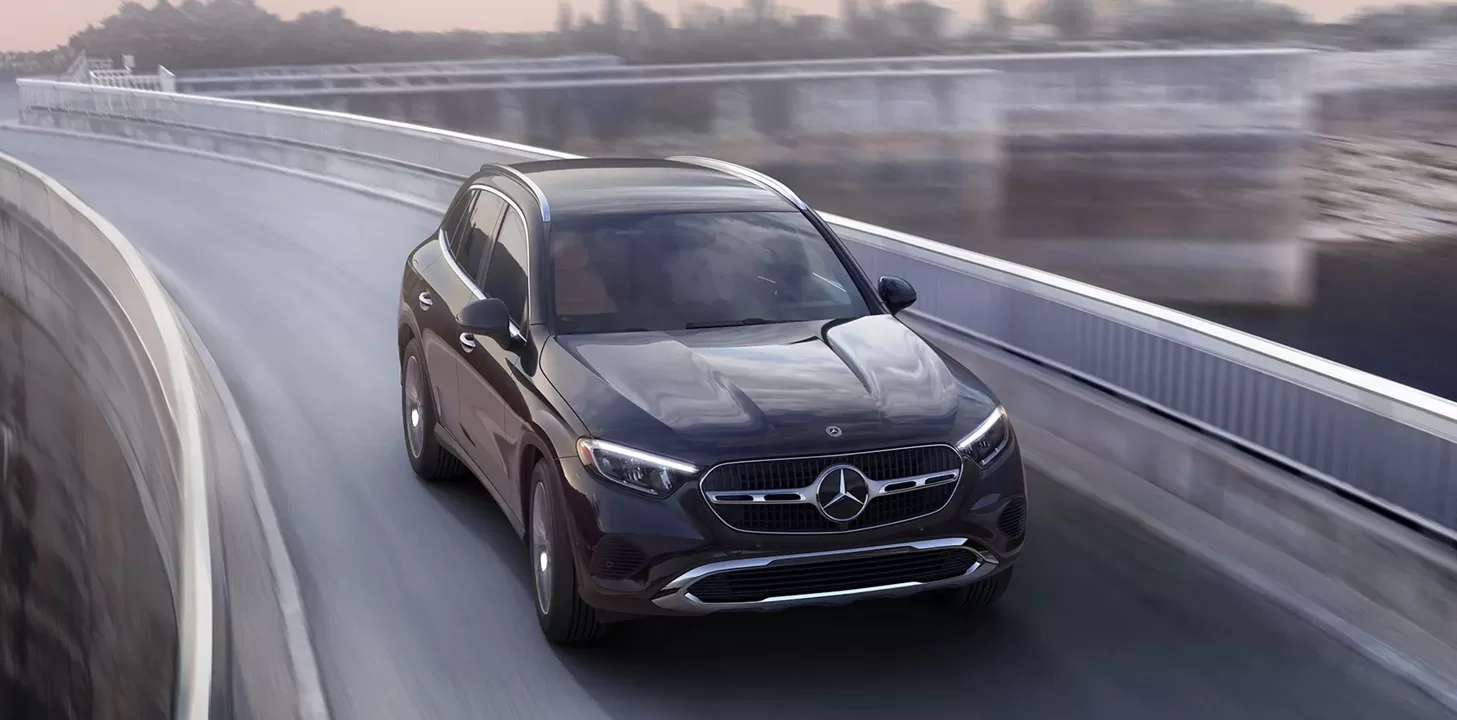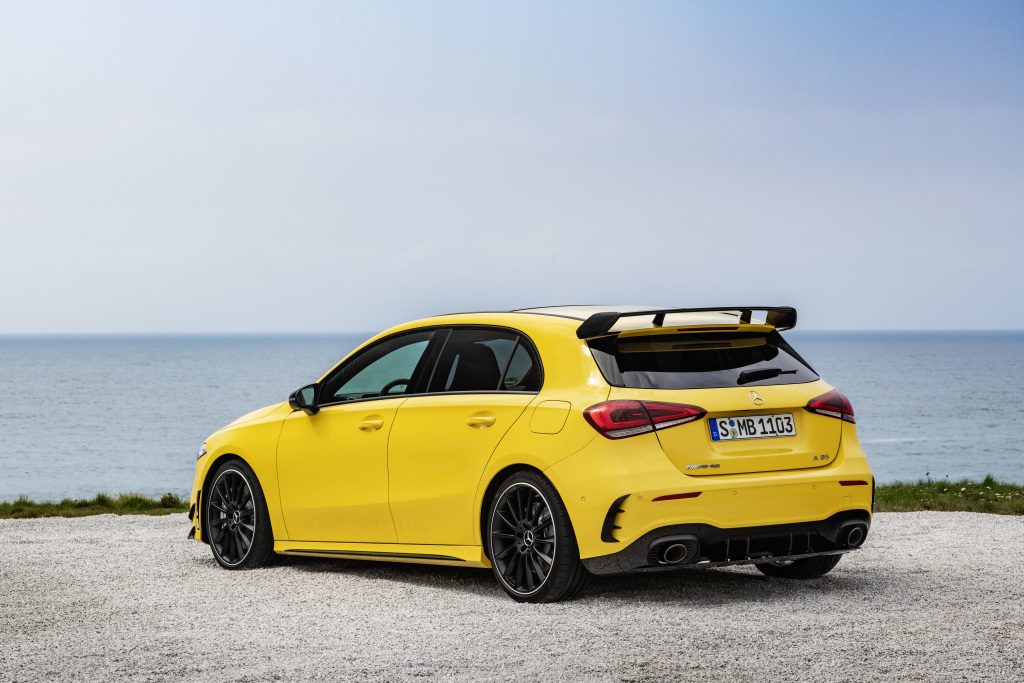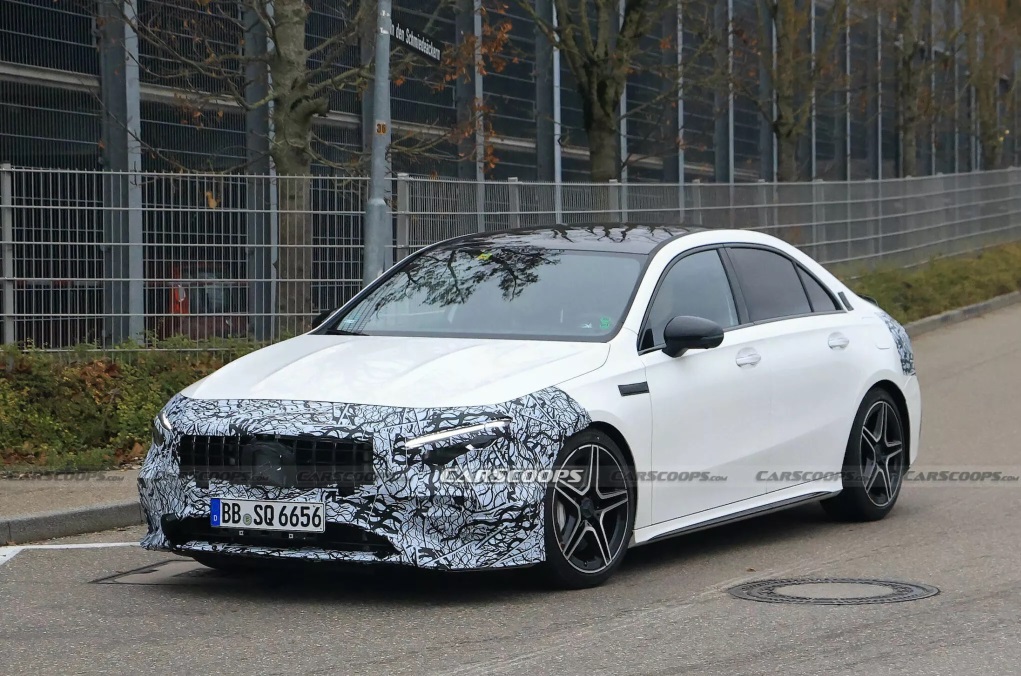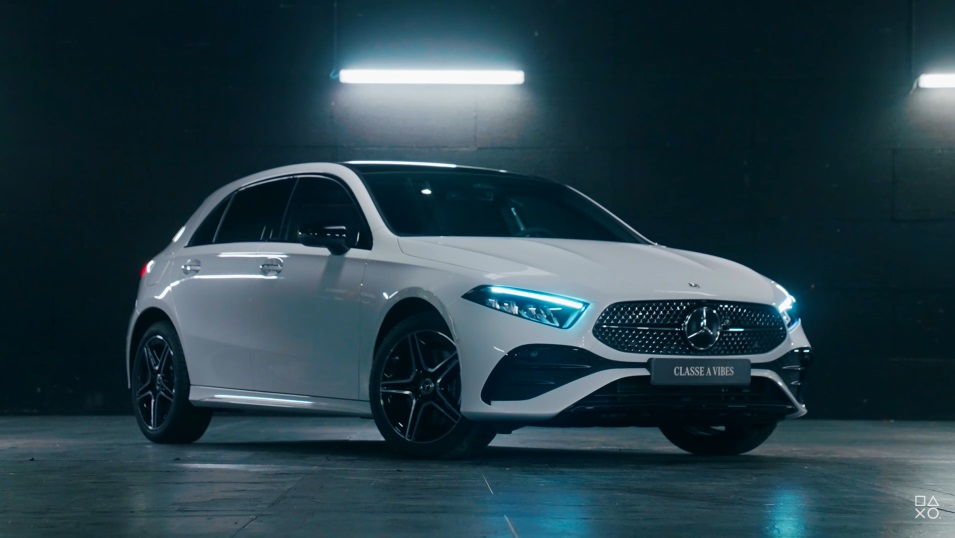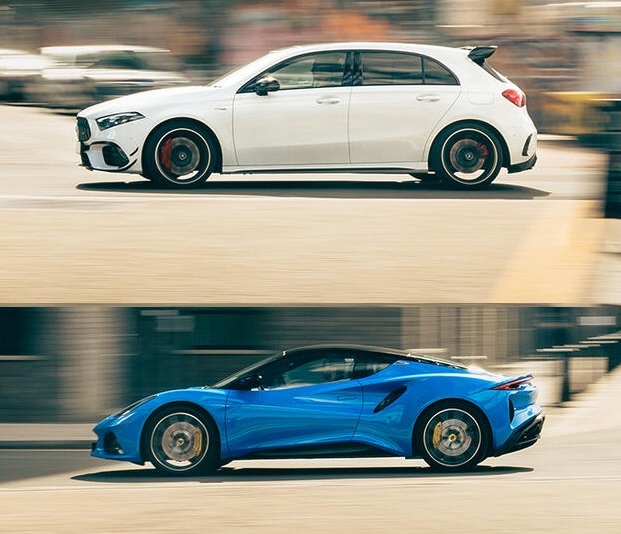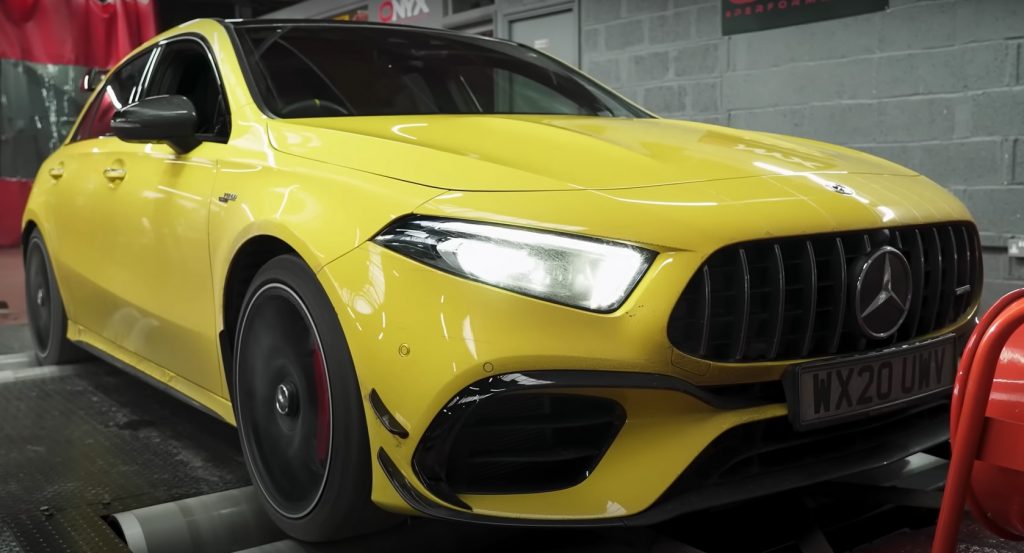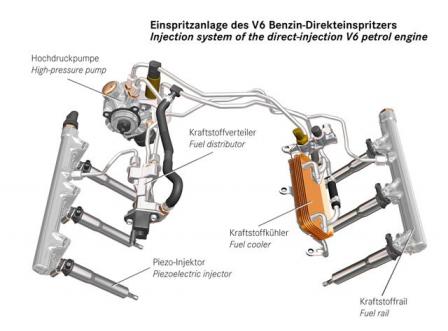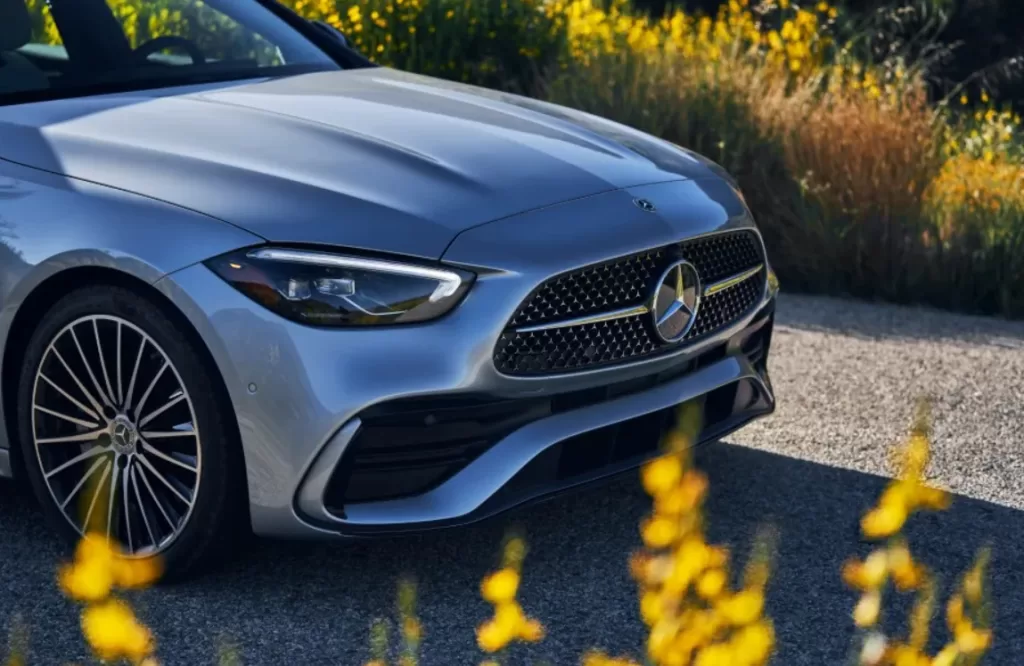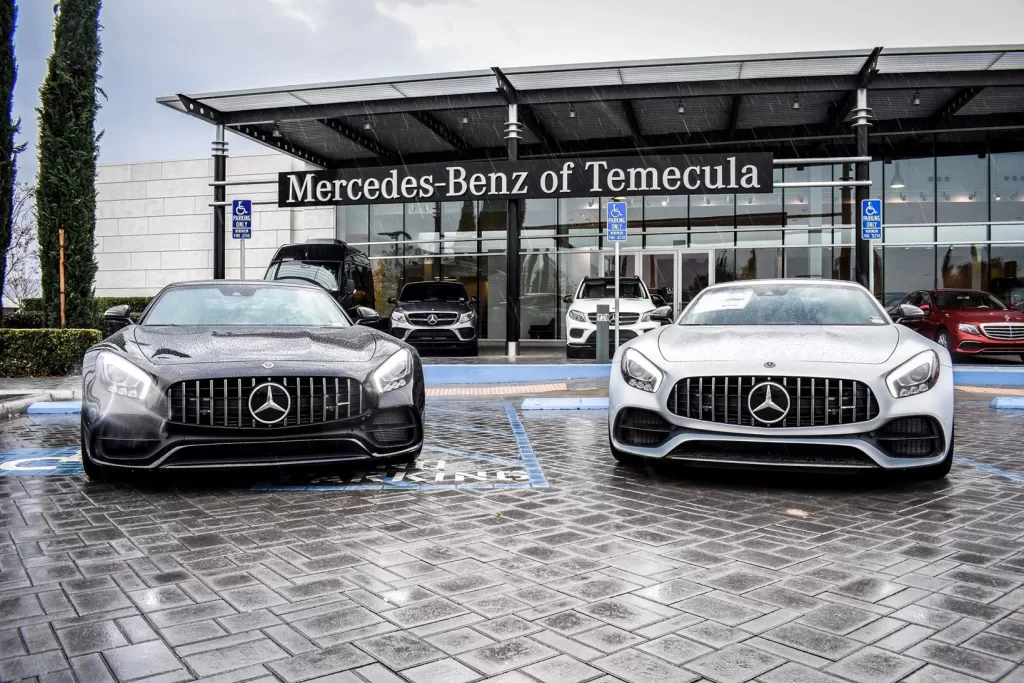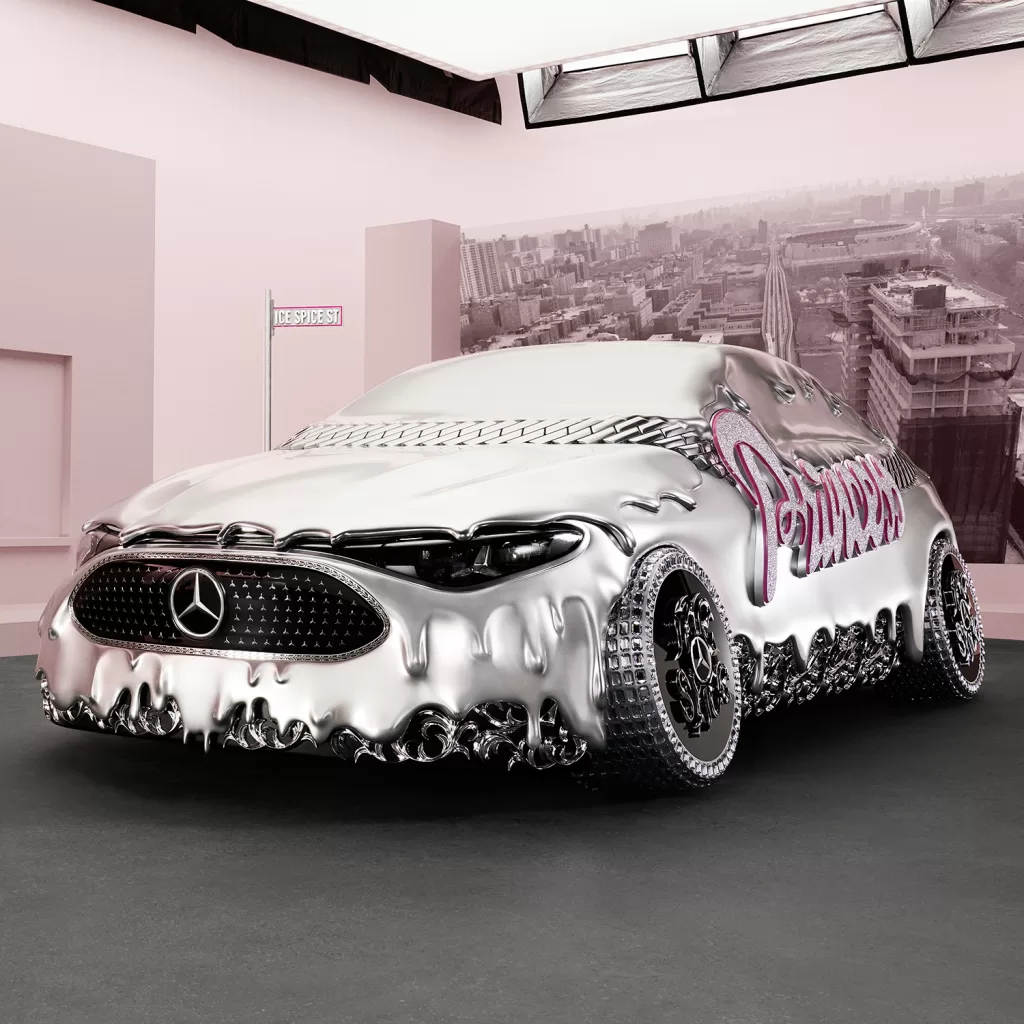Mercedes-Benz is now presenting the world’s first petrol engine with spray-guided direct injection in the E-Class as well. A favourable fuel consumption and powerful performance characteristics are by no means contradictory for this direct-injection petrol engine from Mercedes-Benz. On the contrary, with an output of 215 kW/292 hp the six-cylinder unit delivers 15 kW/20 hp more than the V6 with conventional injection technology, as well as four percent more torque. At the same time, compared to the highly efficient V6 petrol engine with port injection and fully variable valve control, Mercedes-Benz has achieved a further fuel saving of around ten percent according to NEDC. The E 350 CGI consumes 8.7 to 9.2 litres (Estate: 8.9 – 9.4 litres) per 100 kilometres. This means that for all its outstanding economy, the V6 engine delivers a superior driving experience which is unprecedented in the six-cylinder class: the E 350 CGI takes only 6.8 seconds (Estate: 7.0 seconds) to accelerate from zero to 100 km/h, and is capable of a top speed of 250 km/h (Top speed is electronically limited).
Key figures for the new CGI engine at a glance:
* Displacement 3498 cc, compression ratio 12.2 : 1
* Output 215 kW/292 hp at 6400 rpm
* Maximum torque 365 newton metres at 3000 to 5100 rpm
The trailblazing injection system, with which the Stuttgartbrand is once again asserting its role as a technological trendsetter, ensures far superior fuel utilisation and therefore a higher thermodynamic efficiency than the previous, wall-guided direct injection. The new Mercedes engine consumes the fuel almost completely, which also means fewer emissions. The result is a superior driving experience with outstanding economy. This new concept will provide the basis for future engine developments in this performance class.
Trailblazing technology: fast and highly precise piezo-electric injectors
The key components of this innovative, spray-guided direct petrol injection system are fast, highly precise piezo-electric injectors. Their invention has given rise to practically every advance in spray-guided combustion technology.
The developers of the direct petrol injection unit have made even greater use of the positive attributes of piezo-ceramics for the CGI engine, namely high performance and speed. In contrast to a diesel injector, where the actuator only operates a valve, the piezo-module of the petrol unit controls the needle directly. The piezo-stroke is therefore directly translated into a needle stroke, thereby determining the valve flow. This direct operation allows intermediate stroke settings, and charge adjustment at the piezo-actuator also ensures a constant fuel flow throughout the operating period. Thanks to its extremely uniform stroke characteristics, piezo-technology also produces a highly reproducible spray formation a major precondition for effective control of the combustion process.
Always a uniform, perfectly formed jet of fuel
The developers of the new direct petrol injection engine devoted painstaking attention to the shape of the fuel jet. This was perfected using an innovative nozzle tip which opens outwards during each injection cycle, allowing the fuel through an annular aperture measuring only a few micrometres. The spray is formed by the contours of the aperture and the nozzle. The result is a uniform, hollow-based cone of fuel under all operating conditions, which also retains its shape when the electronic engine management system alters the angle of the intake camshafts or the length of the intake ducts when high performance is required.
The mixture formation itself is just as important. A swirl effect at the edges and within the cone of fuel sucks air particles into the fuel jet, ensuring a fuel/air mixture with optimal ignition characteristics.
Thanks to response times measuring fractions of a millisecond, the piezo-electric injectors also allow the multiple injections per power stroke that are necessary for lean-burn operation, and provide an important precondition for the engine’s exemplary fuel consumption with this flexible and highly efficient control of the combustion process. This is because they inject the fuel into the combustion chambers several times in succession during each power stroke, thereby significantly improving the mixture formation and ignition characteristics. Combustion is faster, more uniform and more complete than after single injection – which means that the thermodynamic efficiency of the engine is greatly improved and untreated emissions (hydrocarbons) are reduced by more than half.
Pistons with specially formed crowns optimised in flow simulations assist the injection process by holding the lean mixture together at the ignition point, preventing it from spreading towards the cylinder walls. In this way the piston shape makes a further contribution to almost complete fuel combustion, and therefore the favourable fuel consumption and emission levels of the direct-injection petrol engine.
High-pressure fuel injection
The high injection pressure of 200 bar also plays an important part in the constant stability of the fuel jet. To achieve this, the injection system of the new Mercedes V6 engine is similar to that of a modern diesel engine with common-rail technology. Its centrepiece is a newly developed high-pressure pump, which distributes the fuel to the two stainless steel rails on the cylinder banks as required. The piezo-electric injectors are mounted on these.
This system exceeds the fuel injection pressure of a conventional port injection system by around 50 times. The pump delivers fuel to the rails during every other injection cycle, building up maximum pressure. As the fuel is delivered in this way, there is a slight, cyclical fall in pressure during every other injection cycle, however the mean pressure for all the injectors remains around 200 bar. A volume control valve ensures that only the fuel quantity required for the engine’s current operating point is delivered, which reduces the output demanded of the high-pressure pump as required.
Surplus fuel flows back via a water heat-exchanger and mixes with the fuel flowing from the tank of the E 350 CGI. The low-temperature water circuit of the injection system also cools the electronic control unit of the direct-injection petrol engine, which manages all the operating processes of the V6.
Spark plugs perfectly placed at the edge of the fuel/air mixture
Finding the right location for the spark plugs was another challenge which required sophisticated flow calculations and tests. To ensure that the ignition spark performs rapidly and reliably, the spark plug must reach the fuel/air mix but have no direct contact with the liquid fuel, otherwise carbon deposits will build up over time.
To meet both requirements, the piezo-electric injector of the CGI engine projects into the middle of the combustion chamber, i.e. roughly in the position occupied by the spark plug in a port injection engine. The spark plug has been moved closer to the exhaust valves, where it can reach and ignite the combustible mixture at the edge of the swirling fuel/air cone. A cross-flow cooling system in the cylinder head ensures that the spark plugs and injectors always operate within the best possible temperature range.
Stratified charging even at higher loads and engine speeds
The exemplary fuel economy of the direct-injection petrol engine is in large part due to the use of stratified charging. This means that the engine operates with a high compression ratio and a very lean mixture, and therefore very economically. The fuel is injected into the air compressed by the piston at a relatively late stage.
Thanks to multiple injection, this “lean-burn” operation of the CGI engine from Mercedes-Benz has also become possible at higher engine speeds and under higher load conditions: during each power stroke the combustion chambers are supplied with fuel several times in succession within fractions of a second, significantly improving mixture formation, combustion and fuel consumption. The advantages of stratified charging could previously only be exploited under low partial load conditions, but the V6 unit in the new E 350 CGI still operates in “lean” mode at speeds in excess of 120 km/h, only switching to so-called homogeneous mode with a fuel/air ratio of 1:14.6 (lambda = 1) at a later stage. With an anticipatory style of driving and at a roughly constant speed, the CGI engine of the E 350 CGI betters the fuel consumption of the six-cylinder engine with conventional injection technology by up to 1 litre per 100 kilometres on country roads and motorways. This corresponds to a fuel saving of up to ten percent.
Dual effect: low untreated emissions and high exhaust temperatures
The combustion process developed by Mercedes engineers, with several injection pulses in rapid succession per power stroke, also benefits the smooth running characteristics and exhaust emissions of the V6 engine. Measurements have shown that untreated emissions (hydrocarbons) are reduced by more than half during the warm-up phase. Precisely controlled injection and combustion also allows higher temperatures to be achieved in the exhaust manifold, which ensures that the catalytic converters reach their best operating temperature more rapidly. The direct-injection petrol engine reaches an exhaust temperature of more than 700 degrees Celsius just eleven seconds after a cold start. Exhaust gas aftertreatment is by two close-coupled, closed-loop catalytic converters with linear lambda control which comes into operation immediately after cold-starting.
Mercedes-Benz reduces nitrogen oxide emissions in two ways: with an electrically controlled, cooled, twin-pipe exhaust gas recirculation system, which returns up to 40 percent of the exhaust gases to the cylinders depending on the engine’s operating point, and by two underbody Nox storage-type catalytic converters. During lean-burn operation these converters absorb the nitrogen oxides and release them during brief regeneration phases, so that these pollutants react with the other exhaust gas constituents to produce harmless nitrogen. Sensors located upstream and downstream of the catalytic converters monitor their operation.
Otherwise the new CGI engine is equipped with the same, unique high-tech package as its opposite number with conventional petrol injection. This includes four-valve technology, variable camshaft adjustment for the intake and exhaust sides, a two-stage intake duct, a balancer shaft and intelligent heat management with a logic-controlled thermostat. The crankcase and cylinder head of the six-cylinder unit are made of aluminium, while the cylinders feature liners in low-friction, dimensionally stable and lightweight aluminium-silicon technology. All the fuel supply components of the CGI engine are of stainless steel or brass; the rails on the two banks of cylinders and the housing of the high-pressure pump are of forged stainless steel.
The new E 350 CGI operates on sulphur-free premium petrol, and has the potential to meet future exhaust emission standards thanks to its state-of-the-art technology.

